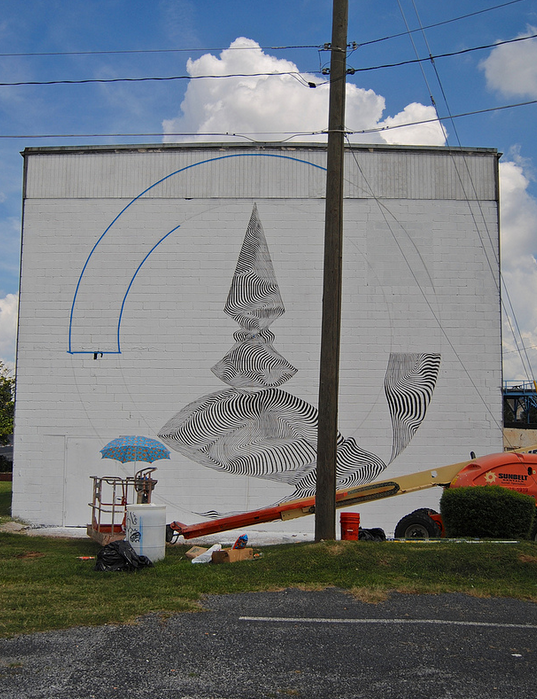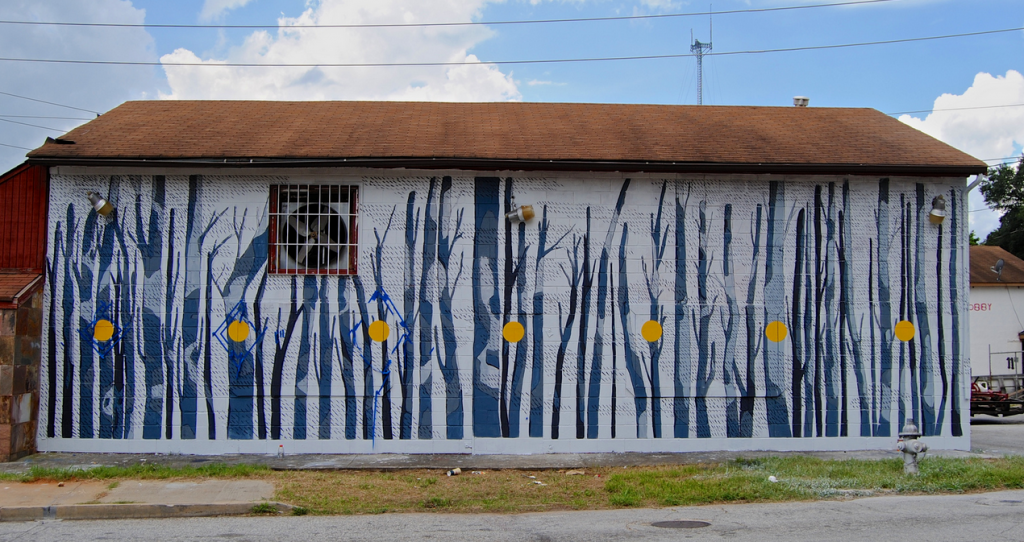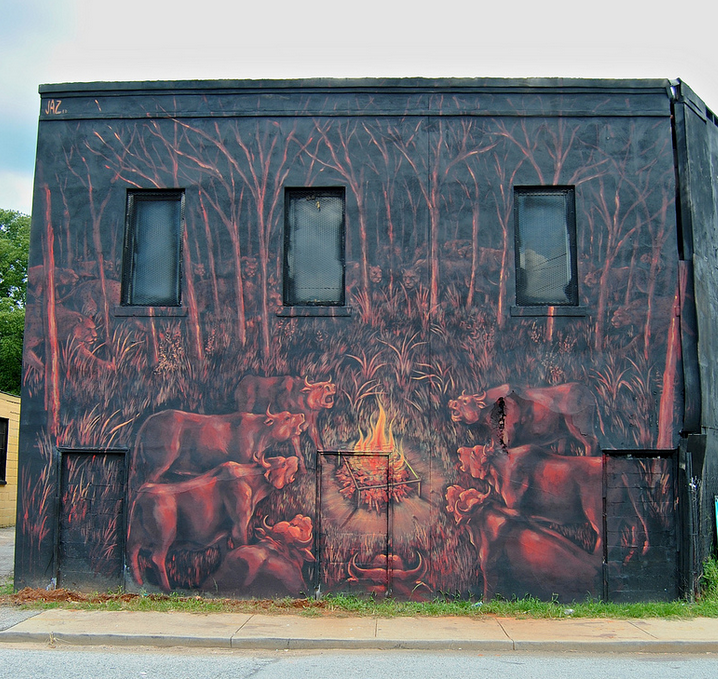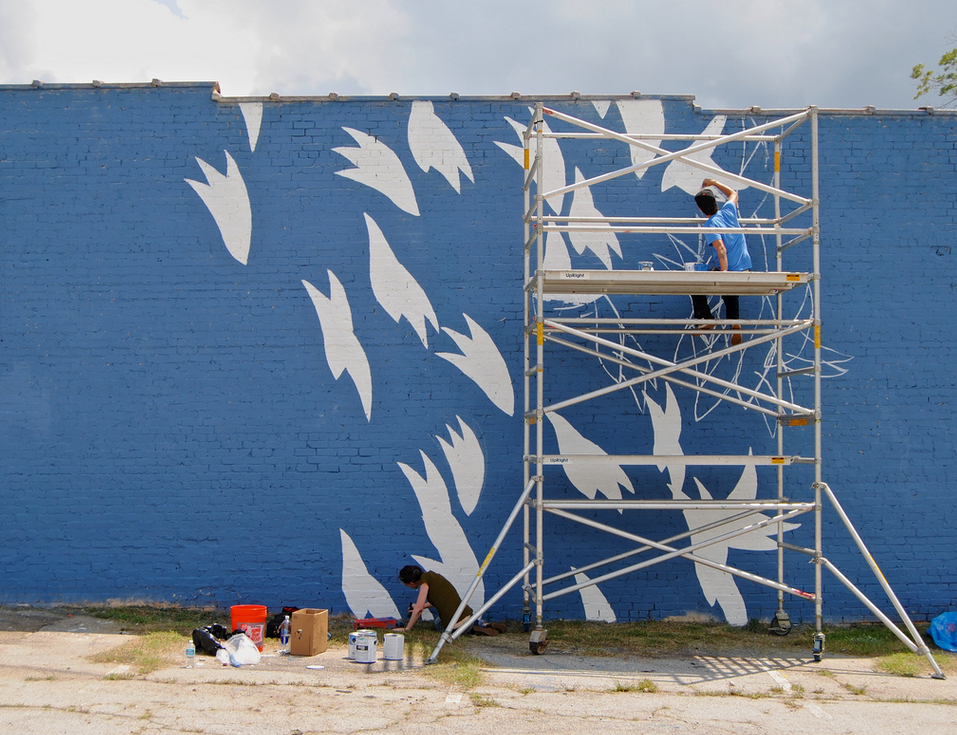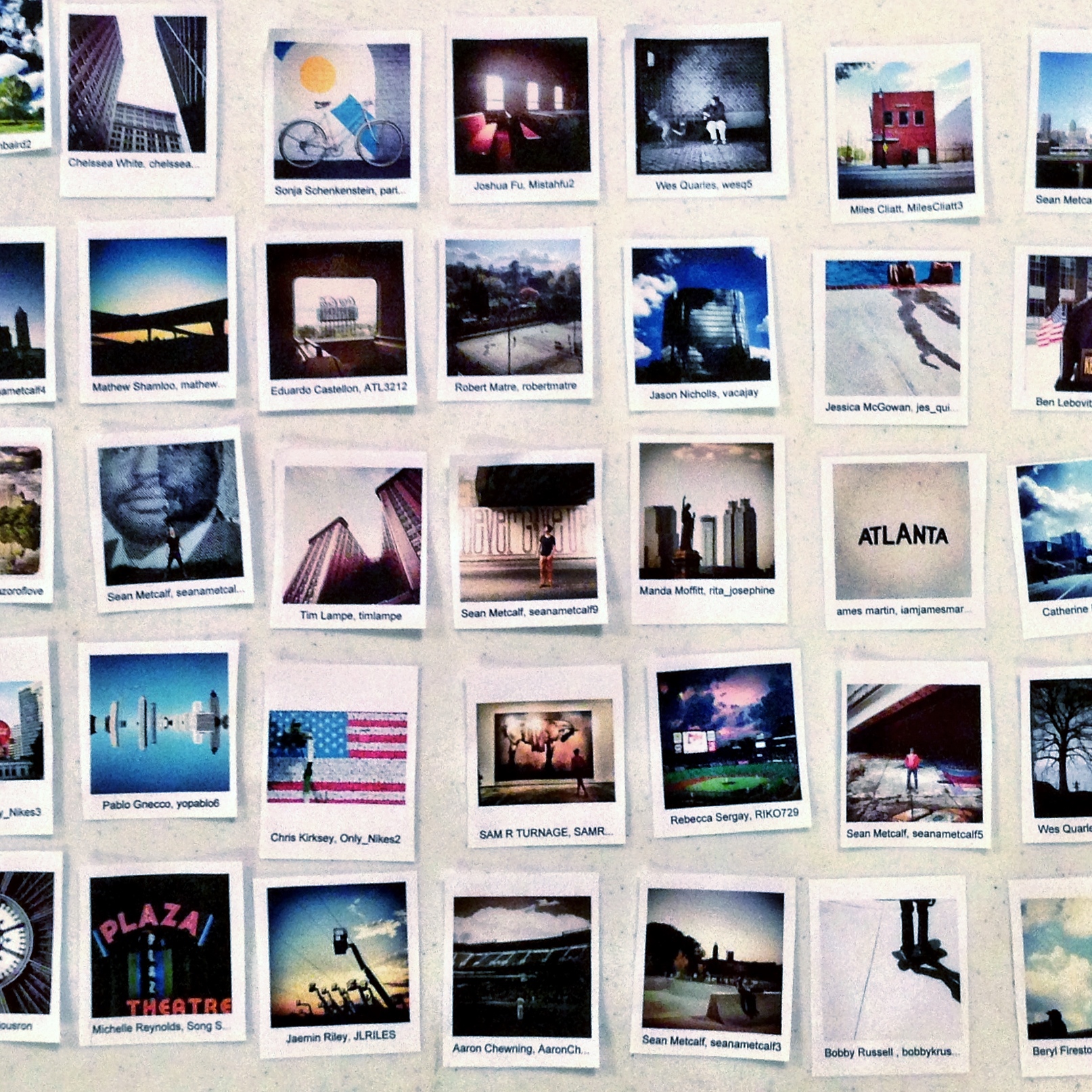Few projects (if any) have transformed our city’s public spaces like Living Walls. Founded in 2009 by Monica Campana and Blacki Li Rudi Migliozzi, the nonprofit organization works with street artists, graffiti writers, academics and the City of Atlanta to re-imagine defunct buildings and rundown structures by turning them into canvases, while at the same time, creating an ongoing dialogue about public art and its impact on our community.
Last year, Living Walls debuted its first conference, which was also the world’s first and only all-female street art conference. The second annual conference begins tonight, and will hold events around town (like tomorrow’s Edgewood Block Party) until the main event this Saturday at the Goat Farm Arts Center—complete with an exhibit, art talks and live music—what they’re calling their “biggest celebration of street art yet.” (We’ll be there, duh.)
CommonCreativ spoke with Living Walls’ Jasmine Amussen about what to expect from this year’s conference, the importance of public art and the mural that had some Atlantans up in arms.
CC: How did the first conference come about?
JA: The conference was executed by the sheer willpower of asking friends, artists, anyone to help out, and they did. People assumed we were uniformed about street art because none of the big names were participating. After the first year, that changed. We’ve grown more and more each year, in terms of our programming and the artists participating. Blacki has since moved on, but Monica Campana remains the executive director.
CC: What can people expect from this year’s Living Walls conference?
JA: This year’s conference is packed full of programming. [Tonight] is our first night—movie night with Brooklyn Street Art at Callanwolde Fine Arts Center. The 15th is our Edgewood Block Party, where bars and restaurants along Edgewood Avenue participate with bands, drink and food specials, and all of our walls will be highlighted through the night. The 16th is lecture night at the W Hotel – Midtown. Our speakers range from Assata Richards from Houston’s Rowhouse Project, to the Atlanta History Twins. Saturday the 17th is our main event, co-presented by The Goat Farm. There’ll be a gallery exhibit of works from this year’s artists, Pecha Kucha style talks, a DJ set by Vicki Powell, and [a headlining performance] by Killer Mike. We’ll end Sunday with a bike tour of this year’s walls.
CC: What will be different from last year’s conference?
JA: Last year’s conference was very special—we obviously cannot replicate that, but we’ve put together a great lineup from all over the world, and all of the domestic artists are from Atlanta. Some, like Gyun Hur, are actually painting their first wall. This year is also different in that most of our walls are in little clusters around the city. There are six walls in Summerhill, five on Memorial and Moreland Avenue (including two on the Reynoldstown Lofts), and the Edgewood corridor alone is home to 10 murals. You’ll be able to walk these little clusters and experience Living Walls in a very different way. At the beginning of the month, we also had JR, the French muralist, come and paste civil rights era images for the 50th anniversary of MLK’s “I Have A Dream” speech as part of his ‘Unframed’ [series]. That was a very special project, and we’re proud to have it here in Atlanta.
CC: How can people experience and be part of Living Walls?
JA: Living Walls always needs volunteers. We have a volunteer group on Facebook where we post about upcoming volunteer opportunities. We’re pretty set for the conference [this year], but there will be more projects later in the year where we’ll need help. The complete lineup of events, locations and details can be found on our event page. We also encourage the public to come out during production and just see what’s going on! Some artists have said that their best experience has just been hearing the locals talk about the neighborhood, and there’s always a chance that someone needs help moving some scaffolding or paint buckets.
CC: What do you think about the current state of Atlanta’s art scene?
JA: The Atlanta art scene is very different than what it was just a few years ago. Groups like WonderRoot have been working in the city for awhile, but just since Living Walls inception, groups like gloATL and the Elevate project have sprung up. As a city, we are starting to catch up to cities like New York and Los Angeles, and doing it in our own way. It’s very grassroots and organic in Atlanta.
CC: Last year there was a bit of controversy involving people feeling offended by certain murals and/or painting over them. What are your thoughts?
JA: We’ve worked very hard with neighborhood organizations, the city, and the artists to achieve a balance in what the art is and where it’s going in the city this year. At the beginning, it was just agreements with wall owners, and then it grew to include neighborhood groups, and now the City of Atlanta is involved. Living Walls is very unique, and we’re still working out how to include everyone and not destroy the integrity and spontaneity of the art. We don’t want to make safe, easy art, but we don’t set out to offend anyone. It’s a very thin line, and last year taught us a lot. It was unfortunate that artwork was lost in those neighborhoods, but we’re aware of concerns and have worked hard to address them.
CC: Why do you think this type of public art is important, especially in Atlanta?
JA: Public art, and more specifically, Living Walls is important because art can do something no corporation, no business, no city council person can do, and that’s get people talking—talking about the art, talking about the business that used to be there, even just meeting each other as neighbors. People are curious about art, and that curiosity can lead to all kinds of change and action in a neighborhood. It’s amazing to hear people at [murals] talk about what it means to them, what it means to have a piece in their neighborhood. It’s very empowering and keeps us motivated.
CC: What’s been your proudest moment being part of Living Walls?
JA: My proudest moment actually comes off the heels of the Hyuro mural [that sparked the controversy]. I live in Chosewood Park, where her wall was painted. Although I would’ve liked the mural to stay, I was very proud of the discussion that arose out of it, and getting my neighbors together. It was almost awe inspiring to see that some paint on a wall could get hundreds of people together to talk on a tennis court on a Monday night. I was very proud of my neighborhood, and very proud of Living Walls for that.
CC: After the conference, what’s next for Living Walls?
JA: After the conference, it’s back to work! We’ll step back and take a breather, and then begin writing the programming for next year’s conference, and next year’s Concepts—the smaller, more intimate projects where we bring one or two artists at a time to paint, or like a few weeks ago, when we did a workshop project with the students at the Paideia School. We just received our federal non-profit status a month ago, so we’re very excited about the possibility of bigger programming for Living Walls.
Click here for a full map of the 2013 wall and event locations and visit their site for this year’s full programming schedule.

